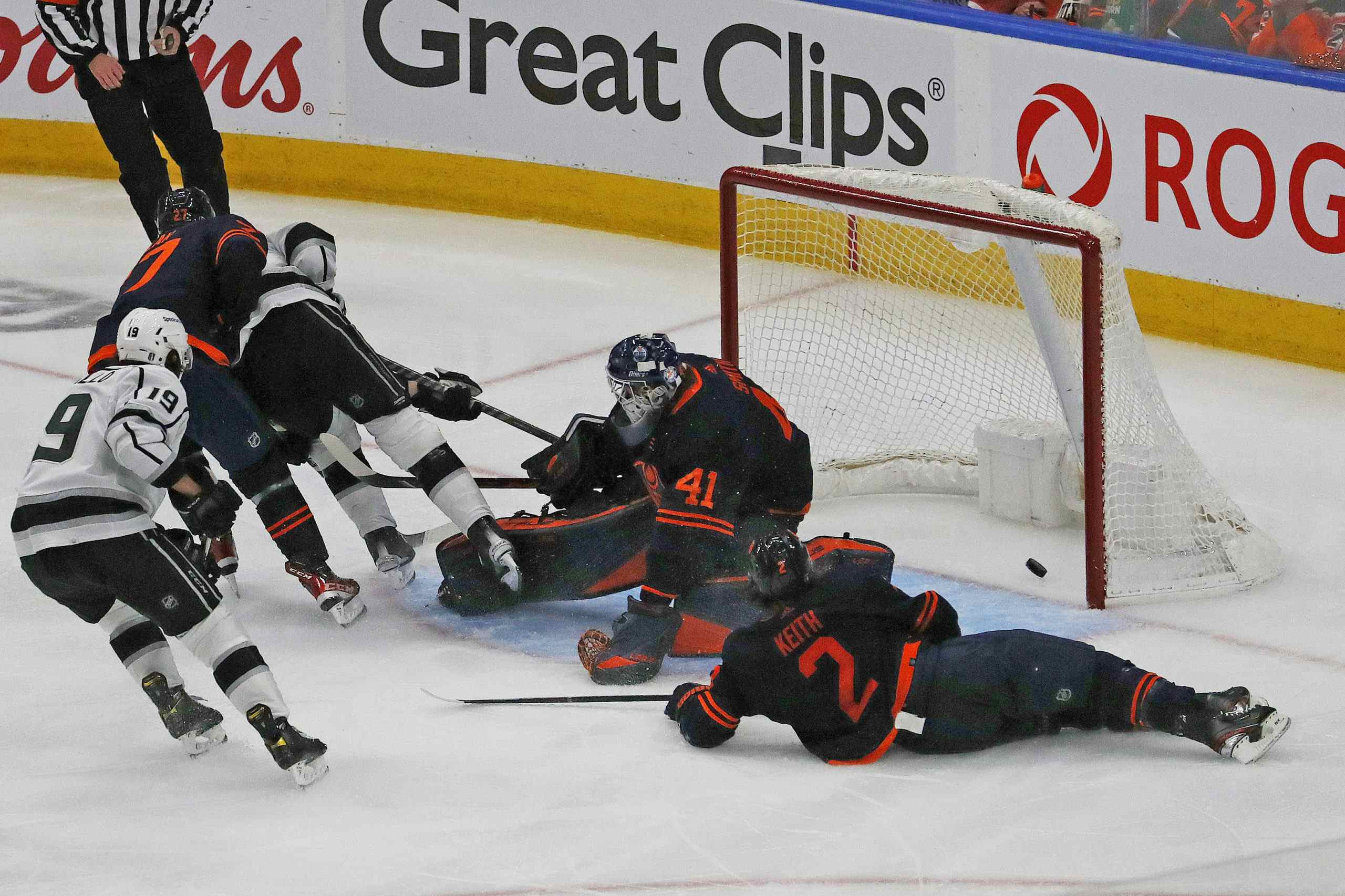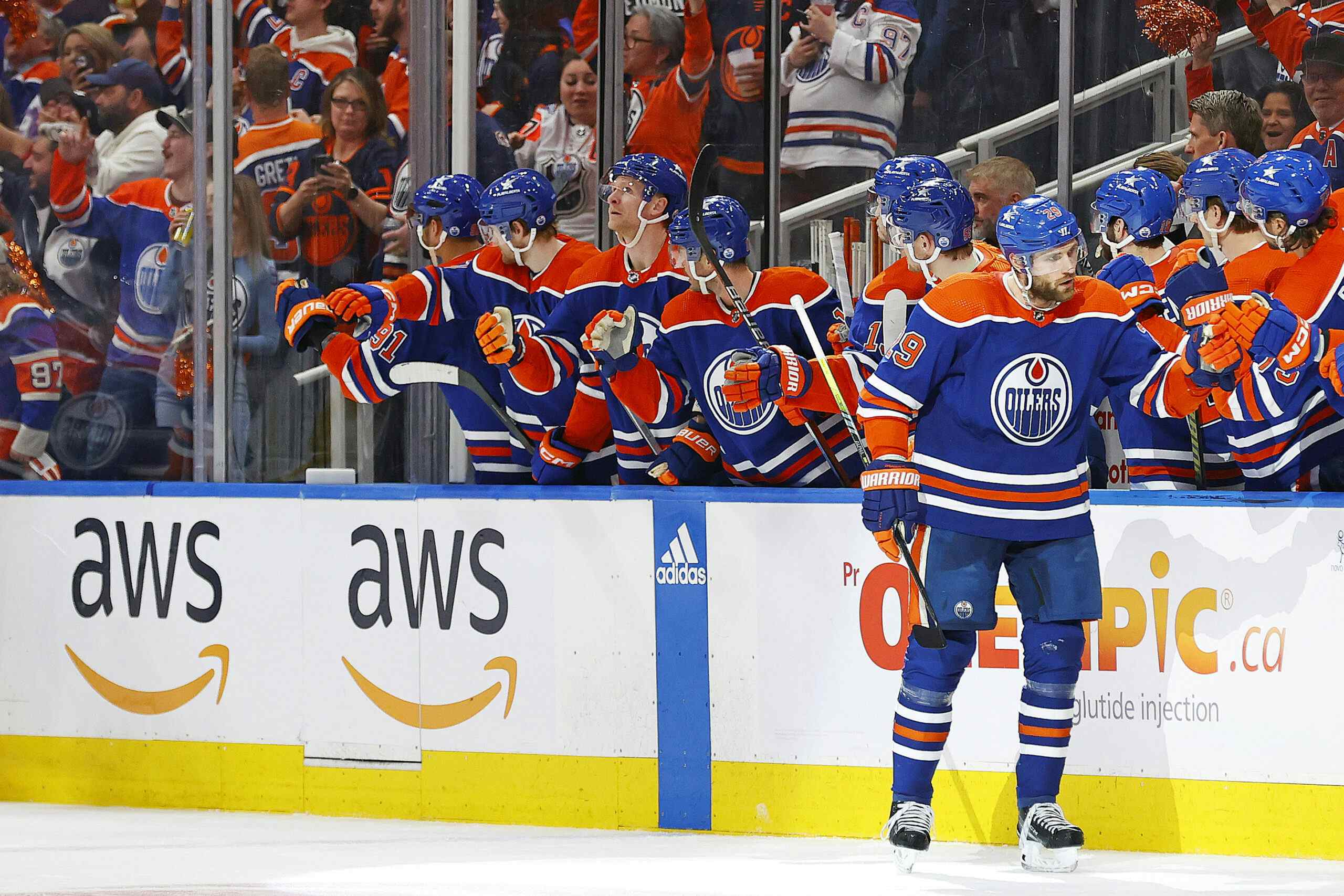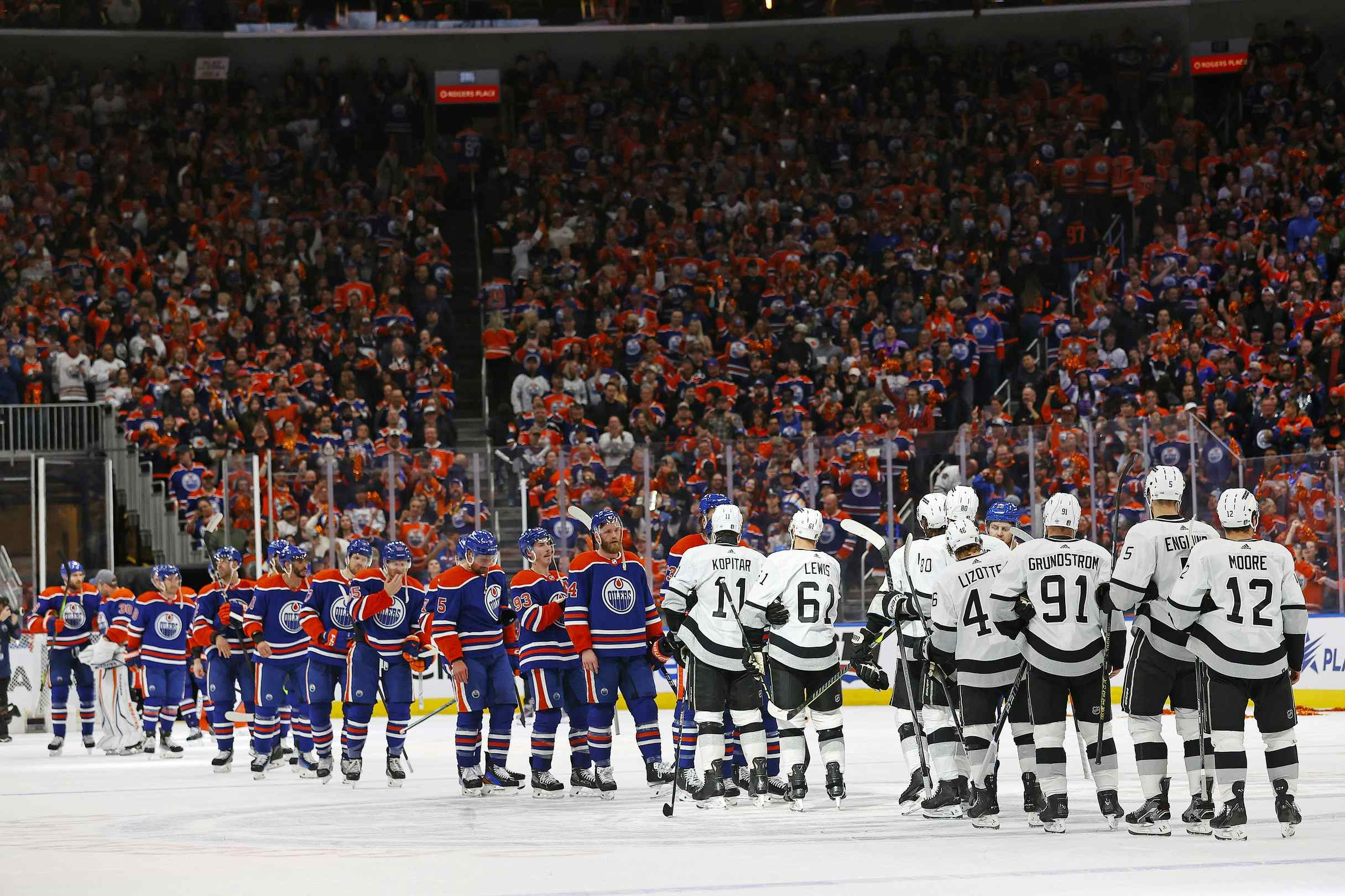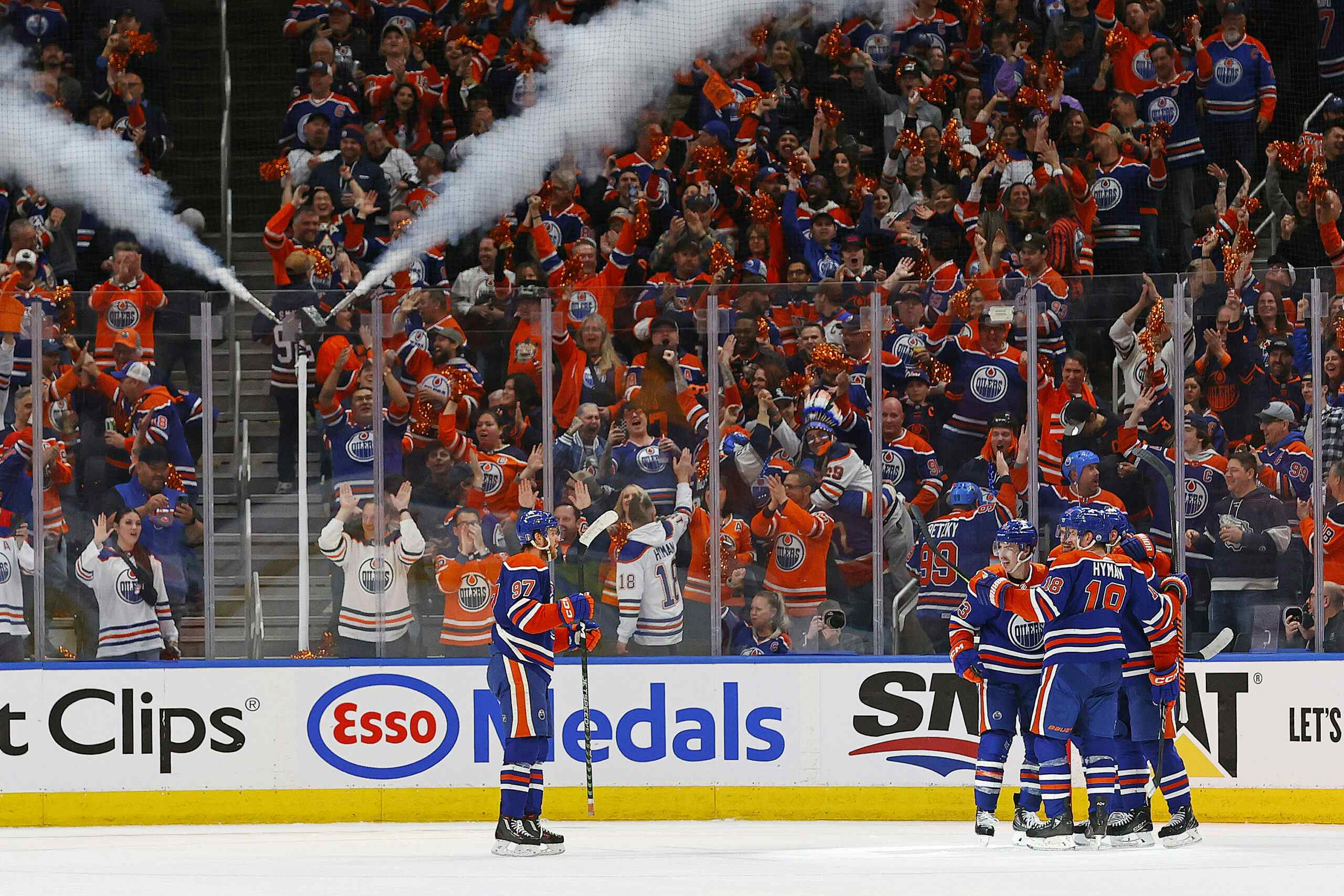Finding the depth scoring

By Cam Lewis
4 years agoThe Oilers lost their first game of the season last night by a score of 3-1 to the Chicago Blackhawks. For the first time all year, Edmonton had a difficult time putting the puck in the back of the net.
@Corey Crawford was rock-solid all night, helping a desperate Blackhawks team pick up their first win after a challenging start to their campaign. In the dying minutes of the third, James Neal finally slid a puck past Crawford on the power play, but it wouldn’t be enough, as Chicago iced the game with an empty-net goal.
The 5-1 start to the season has been fantastic. The team is playing better than anybody expected it would as the group seems to be buying into Dave Tippett’s message. All four lines are playing with energy, the defence looks good despite having two rookies playing each night, the goaltending has been solid, and the team’s top players are carrying the load offensively.
But there’s one issue early on that we’ve seen over the past couple of years now that continues to prevail — depth scoring.
Last season, a lack of depth beyond the Oilers’ top players was key to the team’s ultimate demise. Of the team’s 229 goals, which ranked 20th in the league, 119 of them came from three players. That means @Connor McDavid, @Leon Draisaitl, or @Ryan Nugent-Hopkins accounted for 52 percent of goals scored by the Oilers in 2018-19.
At any given time, there were really one four Oilers you could count on to provide offensively. The aforementioned Big Three were the main contributors, while @Alex Chiasson rode a hot-streak early in the season and @Zack Kassian found his groove on the top line later in the season when Chiasson cooled down. After those five players, Edmonton’s highest-scoring forward was @Drake Caggiula, who was traded in January.
Through six games this season, it’s been a similar story. The Oilers are getting offence from four players. The trio of McDavid, Draisaitl, and Kassian have been excellent, combining for 11 goals, nine of which have come at even strength. @James Neal has regained his touch, contributing eight goals, though six have come with the man advantage. Those four players have scored 19 of the team’s 22 goals.

Oct 5, 2019; Edmonton, Alberta, CAN; Edmonton Oilers forward James Neal (18) celebrates a first-period goal against the Los Angeles Kings at Rogers Place. Mandatory Credit: Perry Nelson-USA TODAY Sports
First and foremost, there are some positives to draw here. It’s great to see McDavid finding a new gear despite his season-ending injury this year. It’s also nice that Kassian is carrying his late-season chemistry with Draisaitl and McDavid over to this season. And, of course, it’s a game-changer that the Oilers have seemingly found another major contributor in Neal. The top-six looks better than it did last season.
But the team needs to find some depth scoring otherwise things are going to go sideways like last year. McDavid and Draisaitl can’t carry the load on their own and we simply can’t expect Neal to score on every second shot he takes.
Let’s take a look back to 2016-17 when the Oilers made the playoffs. That team scored 243 goals, which ranked eighth in the league. Their top-six forwards (McDavid, Draisaitl, Nugent-Hopkins, Jordan Eberle, Milan Lucic, and Patrick Maroon) contributed 147 of those goals. That’s roughly 60 percent of Edmonton’s well-above-average offence coming from the top-six.
Assuming Neal slows down and Nugent-Hopkins, who has yet to score this season, comes back to normal, can we expect the Oilers’ top-six to make a similar contribution? Conservatively, we’ll assume McDavid and Draisaitl score 40 goals each, that’s 80 to start. If Kassian can contribute 20, we’re up to 100. If Neal and Nugent-Hopkins can combine for 40, we’re at 140 goals, right on the cusp of the goals scored by the top-six in 2016-17. Another 10 goals by the sixth player in the top-six would push the 2019-20 Oilers over the top.
What about everyone else? Another key part of the Oilers’ success in 2016-17 was getting some scoring depth from elsewhere in the lineup. The bottom-six forwards contributed 61 of the team’s 243 goals that season. The team is already banking on its top-heavy lineup to do a lot of the lifting. Who else can come through?
As I said earlier, Edmonton’s depth was historically-bad last year. It was shocking to see a team with two 100-point players miss the playoffs, but that’s a testament to how non-existent the depth scoring was.
The team’s third line of Riley Sheahan, Jujhar Khaira, and Josh Archibald have played with nice energy and have thrived in a checking role thus far, but they need to step up and contribute something offensively. The trio has yet to be on the ice for a goal for at even strength this year. The three players individually combined for 24 goals last season. After that, we have Alex Chiasson, who scored 22 goals last year, Markus Grandlund, who scored 12, and some unpredictable wild cards in Gaetan Haas, Joakim Nygard, and Patrick Russell.
In order to reach a 2016-17 level of contribution from the bottom-six, the Oilers need those players to combine for 60 goals. That’s a big ask, so even combing close to what each player did individually last season would be a success. Getting 50 goals from these bottom-six players, and, perhaps players who are called up from Bakersfield during the season, would be an improvement over last year.
I’m fairly confident that the 2019-20 Oilers’ top-six can match what the 2016-17 Oilers’ top-six accomplished offensively. Edmonton will surely need to lean heavily on their top players, but this year’s depth players are more likely to contribute and give some breathing room offensively than last year’s group. Given how potent the top of their lineup can (and should) be, the Oilers only really need to get just something from their bottom-six to be an above-average club offensively.
Recent articles from Cam Lewis





